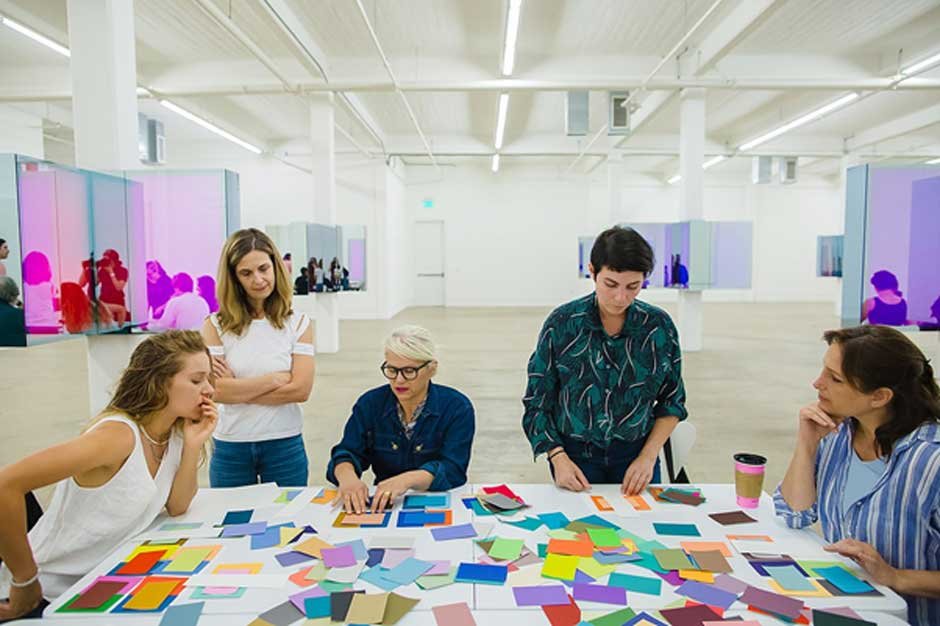In the vast realm of artistic expression, a thriving ecosystem has emerged, sustaining the dreams and aspirations of countless artists. Two integral components of this ecosystem are art grants for artists and exhibition hubs. These pillars not only provide vital support to artists but also contribute significantly to the enrichment of our cultural tapestry.
Grants: Where Did It All Start?
The concept of art grants has deep historical roots, dating back to the Renaissance period. During this time, patrons like the Medici family in Italy supported artists like Leonardo da Vinci and Michelangelo, allowing them to focus on their craft without worrying about financial constraints.
This early patronage laid the foundation for the modern art grant system.
Fast forward to the 20th century, and we see the establishment of organizations dedicated to supporting the arts.
The National Endowment for the Arts (NEA) in the United States, founded in 1965, is a prime example. Its mission is to fund and promote artistic excellence, creativity, and innovation across various disciplines.
What Is the Purpose of Art Grants?
The primary purpose of art grants is to provide financial assistance to artists, allowing them to pursue their creative endeavors. This support can take various forms, including project grants, fellowships, and residencies. Unlike loans, grants do not require repayment, giving artists the freedom to explore and experiment without the burden of financial constraints.
Art grants for artists play a crucial role in fostering diversity and inclusivity within the art world. They provide opportunities for emerging artists, often from underrepresented backgrounds, to showcase their talents and contribute to the broader cultural dialogue.
Do artists benefit from Art Grants?
Grants for artists provide more than just financial assistance. They serve as catalysts for innovation and the realization of their personal projects. Here are four key ways in which artists benefit from art grants:
Financial Support:
Art grants offer artists the financial resources needed to bring their visions to life, covering expenses such as materials, studio space, and living costs during creation.
Time and Space:
Grants often come with opportunities for residencies or dedicated studio space. This allows artists to focus solely on their work without the distractions of daily life, fostering an environment conducive to creative exploration.
Visibility and Recognition:
Grant-funded projects and exhibitions provide exposure, helping artists gain recognition within the art community and beyond. This visibility can lead to increased opportunities for collaboration, commissions, and future grants.
Artistic Freedom and Experimentation:
With the financial backing of grants, artists can take risks and explore unconventional ideas without the constraints of commercial demands.
Who funds these grants for artists?
Art grants receive funding from a variety of sources, including government agencies, private foundations, and philanthropic individuals. As mentioned, government organizations like the NEA allocate public funds to support the arts. Private foundations like the Ford and Getty Foundation are pivotal in funding artistic projects and initiatives.
In recent years, crowdfunding platforms like Kickstarter and Indiegogo have emerged as alternative funding sources for artists. These platforms allow artists to connect directly with their audience, which contributes funds to support specific projects.
Art Exhibitions
Art exhibitions serve as vibrant hubs within the artistic ecosystem, allowing artists to showcase their work to a broader audience. These exhibitions can take various forms, from traditional gallery displays to avant-garde installations in public spaces.
What Are the Benefits of Art Exhibitions?
Art exhibitions offer a myriad of benefits to both artists and the audience. For artists, exhibitions provide visibility and exposure, connecting them with collectors, curators, and fellow creators. Exhibiting work in a curated space also adds credibility to an artist’s portfolio, potentially opening doors to further opportunities.
For the audience, art exhibitions offer a unique and immersive experience, inviting individuals to engage with diverse perspectives and forms of expression. Exhibitions contribute to cultural enrichment by fostering dialogue and understanding across different communities.
Some Renowned Art Exhibitions of All Times
1. The Armory Show (1913):
This groundbreaking exhibition in New York introduced American audiences to European avant-garde art, leaving a lasting impact on the development of modern art in the United States.
2. Documenta (1955 – present):
Documenta is a significant contemporary art exhibition held every five years in Kassel, Germany. It has become a benchmark for the global art scene, showcasing innovative and thought-provoking works. It is one of the most prestigious contemporary art galleries of all time.
3. Venice Biennale (1895 – present):
One of the world’s oldest and most prestigious art exhibitions, the Venice Biennale features national pavilions and a curated international exhibition, attracting artists and visitors from around the globe.
4. The Whitney Biennial (1932-Present):
The Whitney Biennial, hosted by the Whitney Museum of American Art in New York City, is a cornerstone of contemporary American art. Established in 1932, it has evolved into a dynamic platform for showcasing American art’s latest trends and innovations. Held every two years, the exhibition features artists working across multiple mediums, including painting, sculpture, video, and performance art.
5. The Tate Modern Turbine Hall Commissions (2000-Present):
The Tate Modern in London, renowned for its focus on modern and contemporary art, introduced a groundbreaking initiative in 2000—the Turbine Hall Commissions. This ongoing series invites artists to create large-scale, site-specific installations in the museum’s vast Turbine Hall, a former industrial space.
6. The São Paulo Art Biennial (1951-Present):
The São Paulo Art Biennial, held in Brazil, is one of the world’s oldest and most prestigious art exhibitions. Established in 1951, it has been pivotal in shaping the international art scene and promoting dialogue between artists from diverse cultural backgrounds. The Biennial showcases contemporary art, including painting, sculpture, photography, and new media.
In conclusion,
The artistic ecosystem, supported by grants and exhibition hubs, is a dynamic force that propels creativity and cultural expression.
As we navigate the ever-evolving landscape of the art world, we must recognize and celebrate the role of grants and exhibitions in shaping our cultural narrative. Together, they form a symbiotic relationship that sustains artists and enriches the lives of those who engage with art’s diverse and transformative power.
Content Checklist
| Plagiarism Check | 100% |
| Grammarly Score | 100% |
| Readability Score | 33 |
| Primary Keyword | grants for artists (3) |
| Secondary Keyword Usage | contemporary art galleries (1) |
| Inbound Links | 2 |
| Outbound Links | |
| Image Integration | 2 |
| Brand Name | TERAVARNA |











